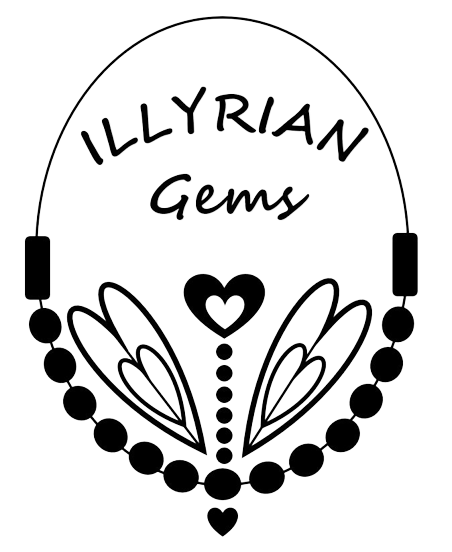After much thought, the new jewellery collection "Adur" is finally here. All of the designs have a connection to the Croatian and Mediterranean heritage, lifestyle and architecture. I have chosen the name Adur, which is how the Illyrians called the Adriatic Sea.

Croatian interlace “pleter” is one of most recognizable patterns most characteristic for its three-ribbon pattern. It is found on and within churches as well as monastaries built between the 9th and 12th century. Most representative example of inscriptions embellished with the interlace is the Baska tablet on the island Krk.
During the 8th century, the Pope assigned Croatia with its own idiosyncratic cross based on Croatian interlace. It is commonly known as The Pleter Cross. The symbol is still very much used and adored in Croatia in the modern day as it represents both Christianity and Croatian Culture.

Rosetta represents a circular Rose Window found on churches and cathedrals, sometimes of a highly complex design, which can be seen to bear similarity to a multi-petalled rose.
Some of the most famous rose windows in Croatia are in Sibenik, Zadar, Dubrovnik and the islands of Hvar and Brac.

Inspired by the Licitar Heart - colorfully decorated biscuits made of sweet honey dough that are part of Croatia’s cultural heritage and a symbol of the capital Zagreb.
Often given for Valentines Day but also to decorate Christmas trees. These unique hearts have been added to the UNESCO List of Intangible Cultural Heritage for Croatia.
The tradition is stretching as far back as the 16th century and one Heart takes over a month to make. Although they’re referred to as gingerbread - they contain no ginger, just flour, water, sugar, honey and colouring.

Lace was often called “White Gold” which reflects it’s value. Handmade lace is literally a labour of love, taking an incredible amount of time to create - it is indeed unique and precious.
Lace quilting in Croatia began in medieval times with the Order of Saint Paul in the town of Lepoglava and then the Benedictine nuns on the islands of Pag and Hvar, where they created these delicate pieces in quiet devotion and humble surroundings.
In 2009, Pag, Hvar, and Lepoglava lace was registered in the list of intangible cultural heritage by UNESCO.

The name Mikelle is derived from Michael (archangel) and the design represents angel wings as angels play a very important role as patron saints of many towns in Croatia, as well as patron saints of police, military, etc; and are celebrated throughout the year. The lace teardrop shape is made to resemble the filigree technique which is how most of the traditional jewellery in Croatia is made.

With Ragusa being one of the most popular traditional earrings from the Heritage Collection I wanted to bring out some more contemporary earrings inspired by this timeless classic.
The hoops are more rich in detail and are very light and versatile.
The drop earrings are on the other hand very minimalist and elegant.
Hope you will like this collection, and I promise, the next one won't be too far away! (I already have the main "ingredient" from Croatia)
Marina

